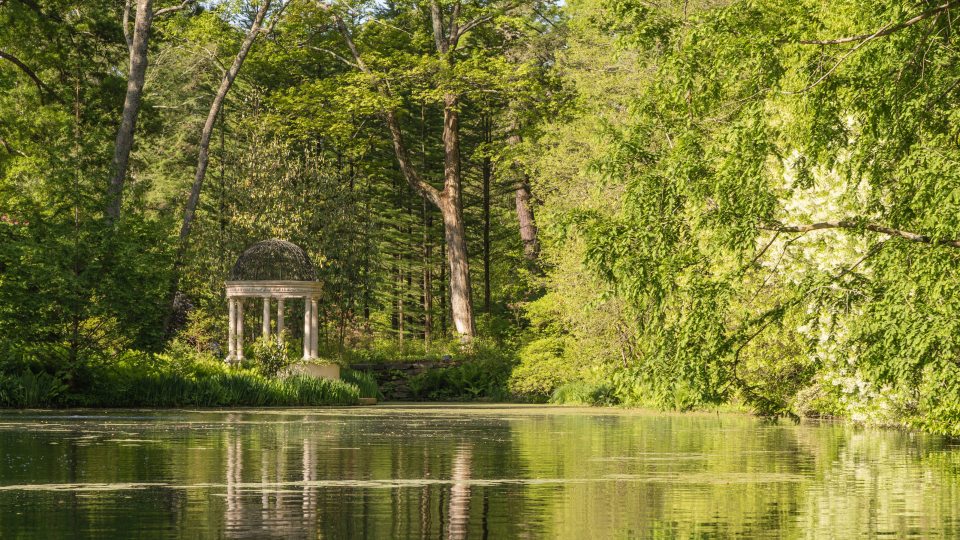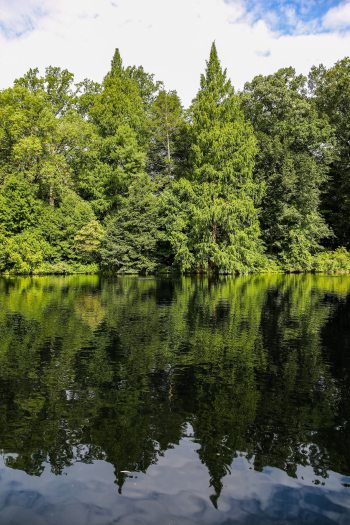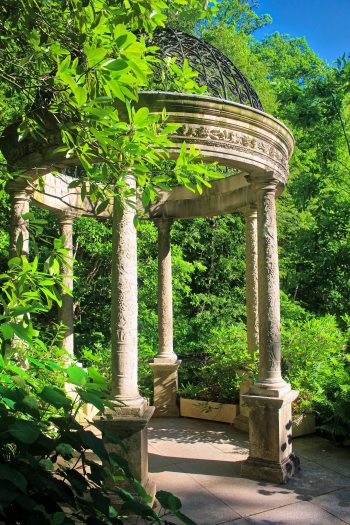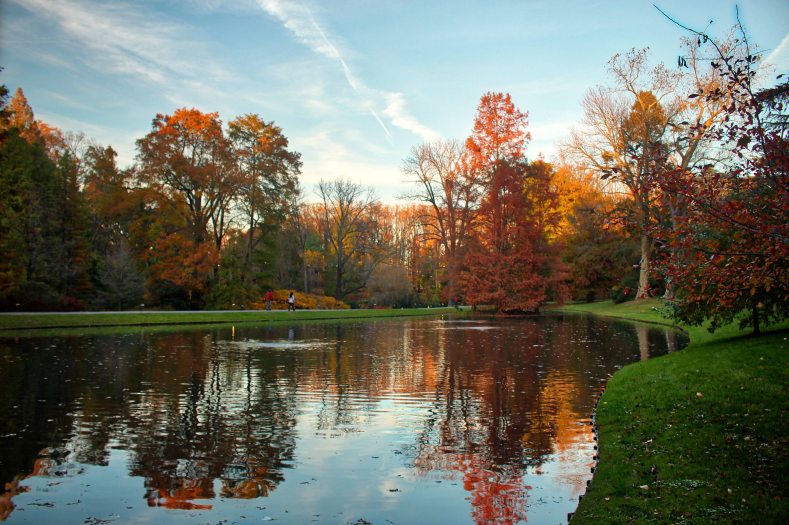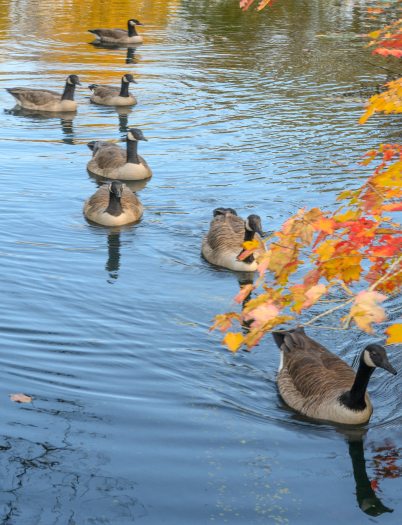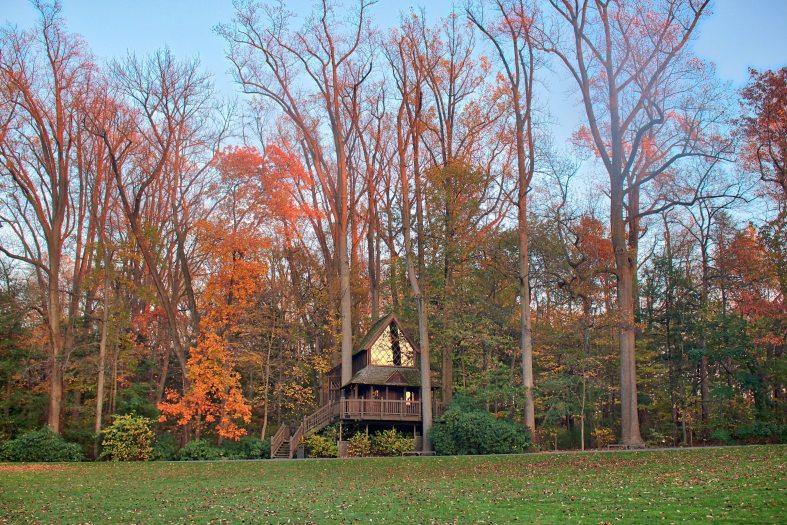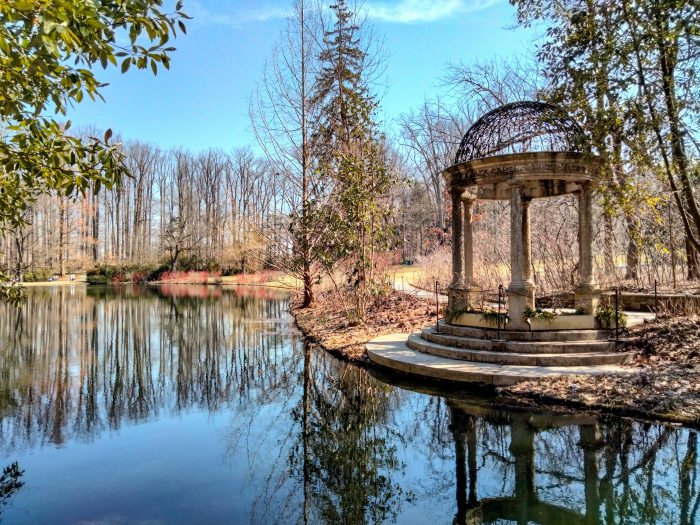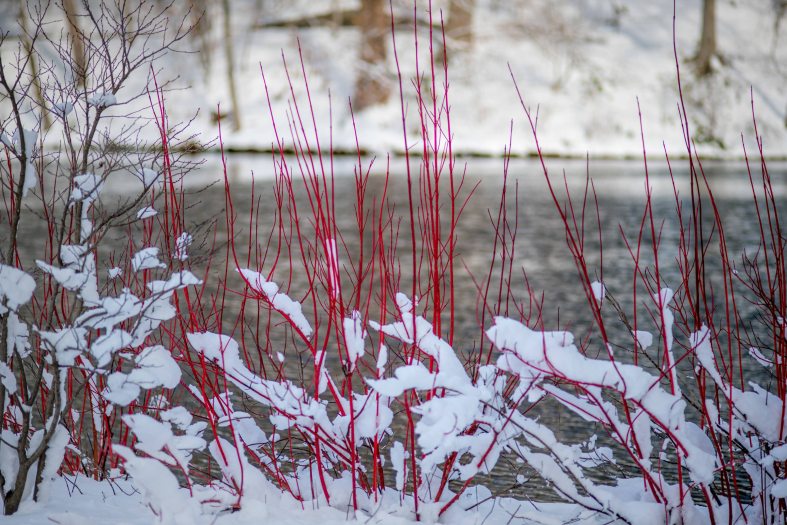Looking to decompress? Stroll by the Large and Small Lakes, where you’ll enjoy expansive views of rolling green lawns, midnight-blue water, and trees that reach for the sky. Treat yourself to a visit to this area of Longwood—breathe deeply, and find a moment or two of (very beautiful) serenity.
About This Garden
There is always something to stop and admire at the lakes, whether you’re walking by them on your way to Peirce’s Woods, the Italian Water Garden, or the Meadow Garden. The casual, park-like setting includes a wide range of horticultural offerings throughout the year. In the spring, banks of flowering trees, daffodils, and layered shades of chartreuse emerge, while summer encourages daylilies, deep green hues, and a chorus of birds. Fall foliage is a given, but what you might not expect is the painterly effect of the colors mirrored in the inky blue water. Winter brings quiet forms and misty mornings.
Often used as a backdrop for art installations, the lakes have featured the works of Bruce Munro and Klip Collective, and are an annual setting for the lights of A Longwood Christmas. Not to be missed as you wander the surroundings: our Love Temple, a folly of the sweetest kind (and the site of many betrothals), which was added in 1967. Tucked into a grove of trees near the Large Lake is the Canopy Cathedral treehouse, which is often abuzz with the sounds of children.
